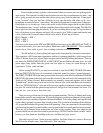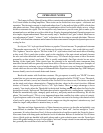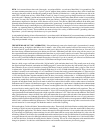The slope or ratio is also difficult to simulate. The initial ratio is low and becomes higher with
more gain reduction until the leds light up fully and further reduction is not easy. This upper limit of
reduction is in the area of 20 dB or at the bottom of the GR meter where the ratio becomes low again
but this would be a severe setting that few engineers could use. Distortion becomes audible at very
deep limiting. In a tech shop, it is easy to drive the limiter to 20 dB of reduction and beyond where the
GR meter shows a flaw in that it "folds back". We put a higher priority on having the meter show
what the Opto was doing accurately with "normal settings" than extreme test bench observations. Test
benches don't make hit records.
So the Opto Limiters seem to be great for vocals, what else are they used for and what about
sounds where the time constants are less than optimum ? Historically "LA" style limiters are often
used for bass and guitar tracks. They can be ideal for brass, saxes, synths and similar sounds with
superb results. There are other compressors that work well for these instruments but few that are as
transparent. Usually, when you hear of an engineer using a non-Opto compressor for these
instruments it is usually framed with "for the crunch" or because they add some desired color. There
is only a very small number of "clean" general purpose variable time compressors which seem to give
Opto units competition - our Variable MU is at the top of that list. Where the "LA" style limiters are
not always appropriate is for percussion and for mixes where the percussion is just right. The Opto
typically reacts fast to peaks - fast enough to remove drums from a mix but not quite fast enough to be
called "brick wall". Individual drums tend to have a little of the initial transient let through but the
desirable tone of the drum is diminished. If used gently, this can be applied to brighten up the attack
of the drum, but it is difficult to apply in practice because drums can be very dynamic. One great use
is on the room mics. The initial drum sound is pulled down, then the natural reverb is increased.
Shades of early Led Zep. While we mentioned that "LA" style limiters are not what we suggest for
mixes, there are times when the drums are too loud or when the engineer can mix "into" the limiter.
Both techniques are possible but not necessarily easy. One trick is very little movement on the GR
meter. Some of our clients use the Opto on mixes as an effect. This application is valid as long as the
effect given and the effect desired are the same. There is not many options for adjustment and fine
tuning. The good news is that at least the Manley is clean enough to pass a good mix. In a live sound
setting the Opto will perform as a fine speaker protection device. Once again the Threshold is set for
minimal limiting with music and is just adjusted to occasionally pull down peaks. Ideally you won't
be able to hear a little limiting like this. You can easily get about 3 dB of limiting on a mix before it
becomes audible in most situations. If the limiter GR meters are typically hitting -6 on a mix then the
limiting will probably be obvious and most styles of music will suffer somewhat.
If what you want is to use a box to process a mix or drums, then you should probably be using a very
good compressor that has attack, release and a low ratio. "Multiband Compressors" are OK for this,
but in most peoples hands they have become something to be feared especially by mastering
engineers who can rarely fix the damage done. It has become common for people to be sent back to
the studio to re-mix, minus the multi-band. The only mastering engineers we know that own them
keep them in the closet except to demonstrate why not to use them and show the comparison between
a pro mastering processing chain and cheese.
11


















